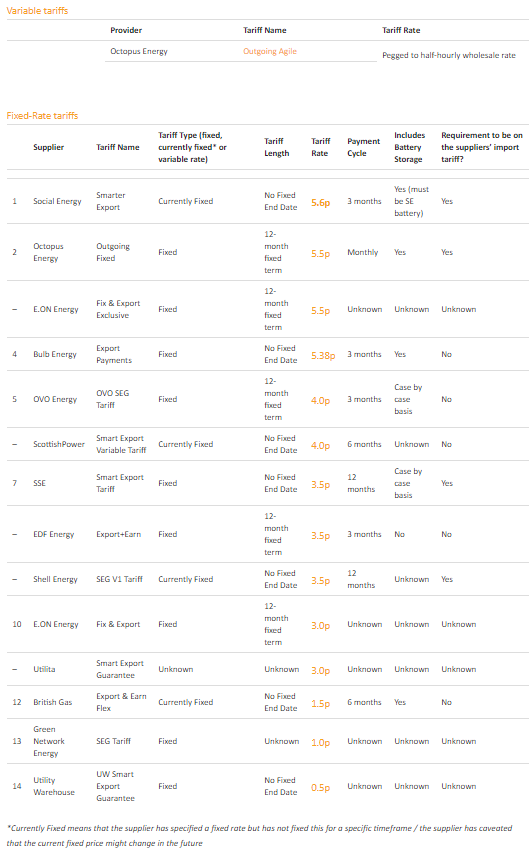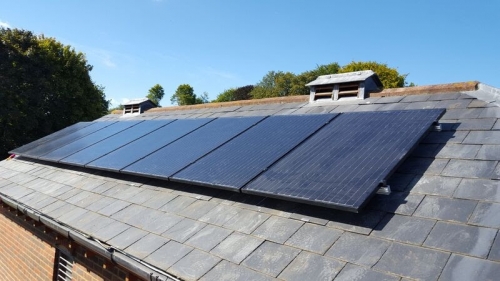The SEG was introduced by the department for Business, Energy & Industrial Strategy (BEIS) to promote micro-generation by ensuring you will get something back for the electricity you export to the national grid. There are only a couple of rules they have set up; the price offered must be greater than 0p/kWh, and to access a SEG tariff you must have a smart meter installed. This has led to a varied approach from suppliers as summarised in the table below.

(Solar Trade Association, 2020)
There is more for to consider than simply the SEG tariff unit rate. The supplier may require you to buy your electricity from them to access their SEG tariff. If this is the case then consideration of their SEG rate must be weighed against the cost of electricity import. In addition to this you need to consider is the rate is fixed and the term of the contract. If the system is aided by an electricity storage battery, it is important to note that some suppliers will include export a battery in SEG tariff payments and some will not.
In conclusion, although the SEG is not as lucrative as the old feed-in-tariff, it is helpful to owners of solar PV systems. It is not as simple as just selecting the best tariff, you have to look at the whole package on offer. If you would like to discuss the installation of a renewable electricity generating technology or battery today, please contact our team on 01293 821345.







